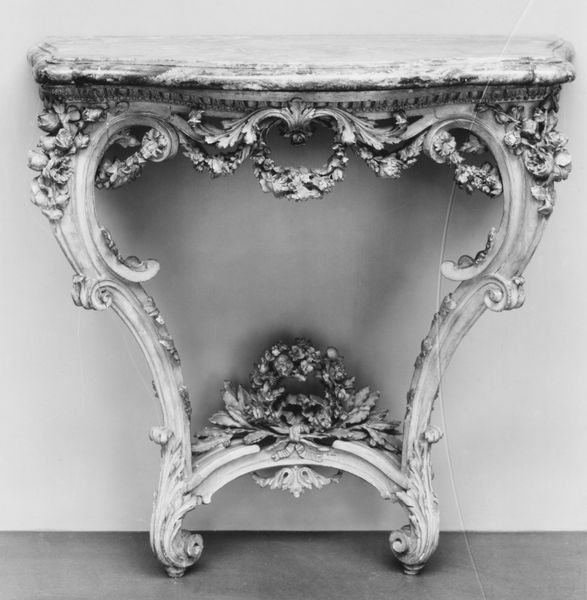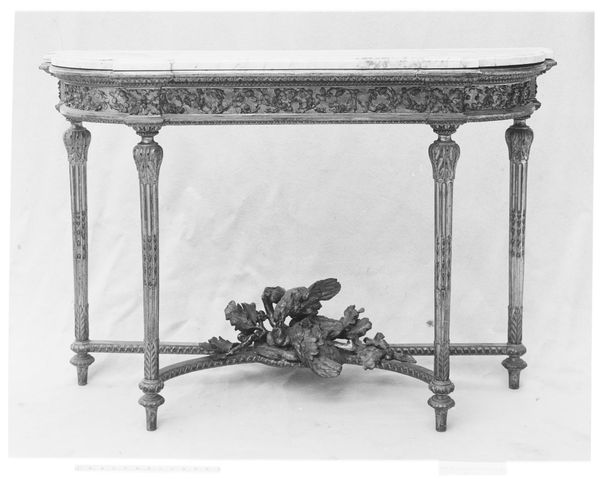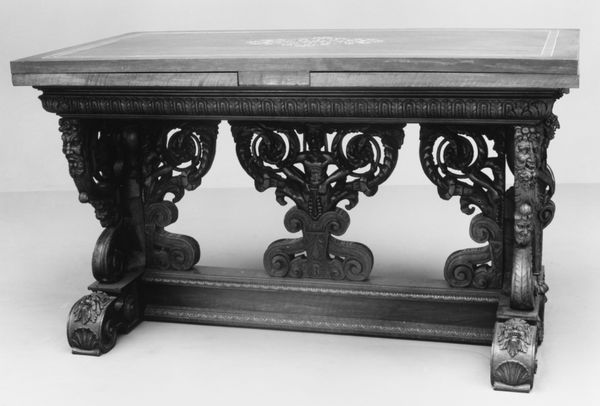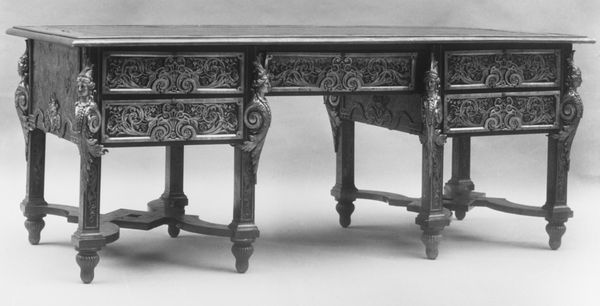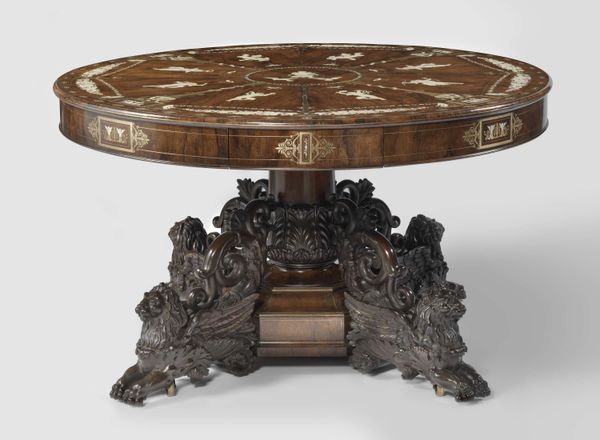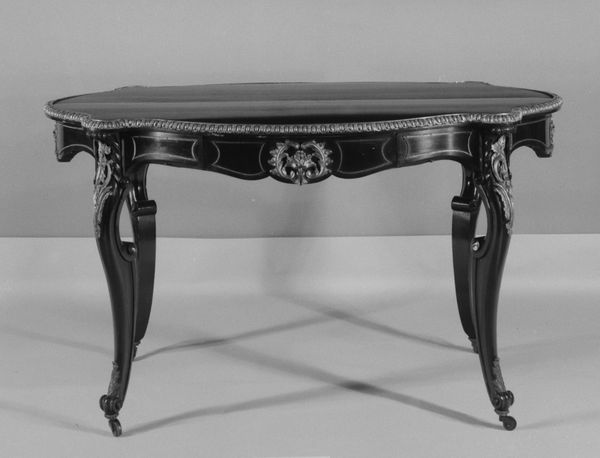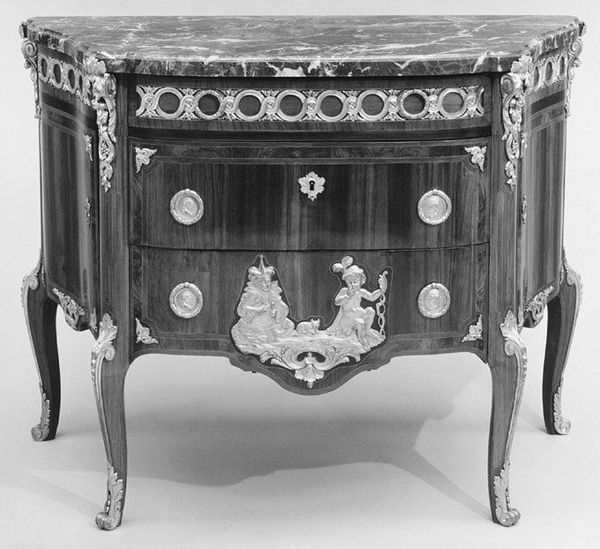
carving, sculpture, wood, marble
#
carving
#
furniture
#
sculpture
#
carved
#
wood
#
decorative-art
#
marble
#
rococo
Dimensions: H. 31-5/8 x W. 54-1/2 x D. 20-3/4 in. (80.3 x 138.4 x 52.7 cm)
Copyright: Public Domain
Editor: This is a console table, one of a pair, crafted by François Rournier around 1735-1740. It’s made of carved wood with a marble top, and it’s currently housed at the Metropolitan Museum of Art. I’m struck by how ornate it is, and how the carvings feel almost alive. How do you interpret this piece, considering its historical context? Curator: When I look at this table, I see more than just a decorative object; I see a reflection of power and social stratification in 18th-century France. Rococo, the style in which this table is designed, was favored by the aristocracy. It speaks to a culture of excess, privilege, and a deliberate distance from the concerns of the common person. Doesn't the incredibly detailed carving suggest to you the immense labor involved, and therefore, a significant economic disparity? Editor: Absolutely, the craftsmanship definitely signifies a certain level of wealth and privilege. I guess I hadn't thought about it in terms of labor disparity, though. Do the motifs themselves—the shells, leaves, and cherubic figures—carry any particular weight within this social reading? Curator: Those motifs were strategically chosen to evoke a sense of luxury, refinement, and classical allusion, reinforcing the patron's cultural capital. The cherubs, for instance, aren’t just decorative; they hint at the commissioner's claim to divine right and the continuation of a legacy rooted in power and prestige. Thinking about that, do you see how the object naturalizes the inequality inherent in the period? Editor: I see your point. It's easy to get lost in the beauty of the craftsmanship without really questioning who benefited from its creation, and at whose expense. I guess I hadn't fully considered how something as seemingly simple as a table could embody so much socio-political meaning. Curator: It's a reminder that even decorative arts are never neutral. By engaging with art through a critical lens, questioning its historical and social underpinnings, we can better understand the complex power dynamics that shaped our world. Editor: Definitely. I’ll never look at a Rococo console table the same way again!
Comments
No comments
Be the first to comment and join the conversation on the ultimate creative platform.
